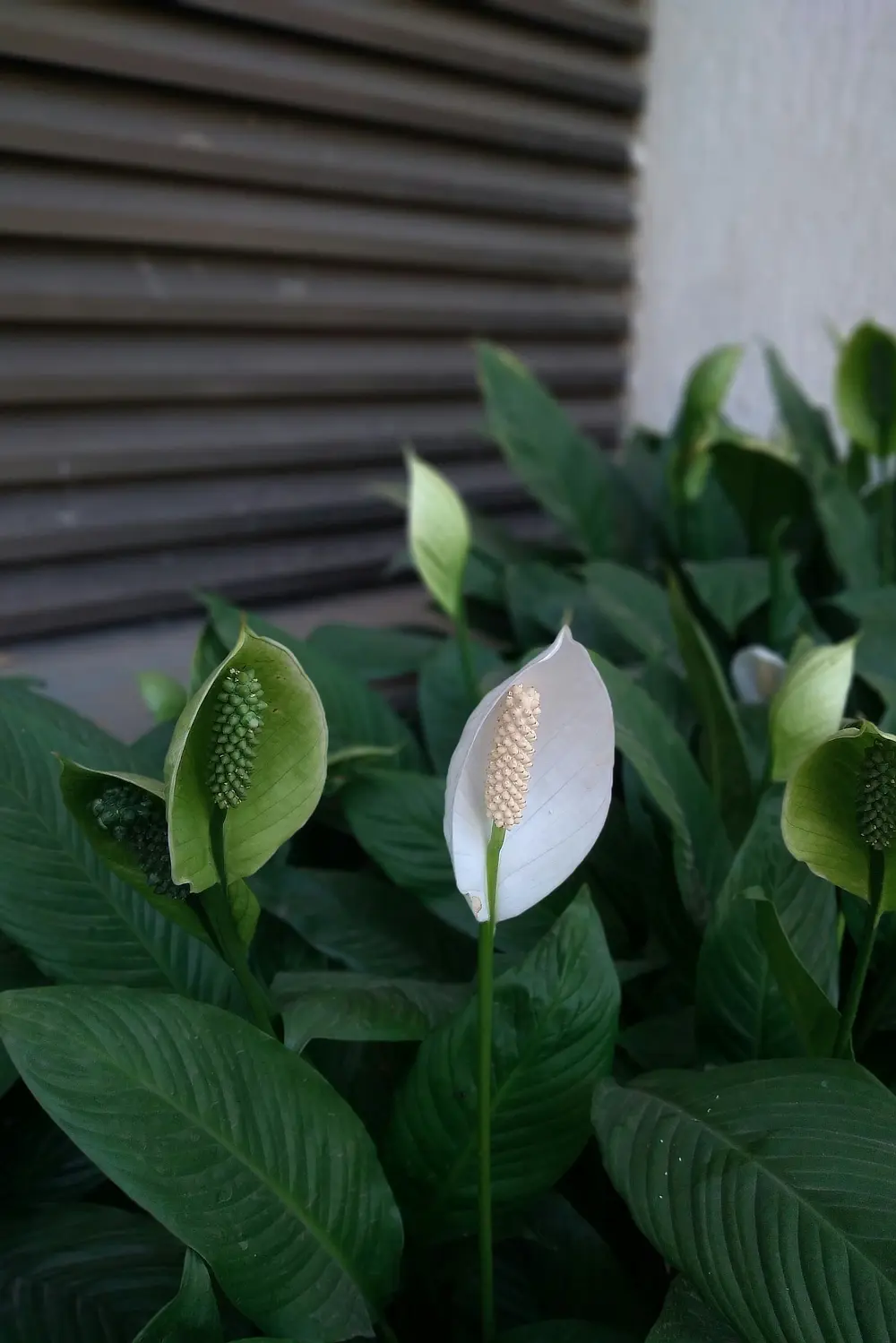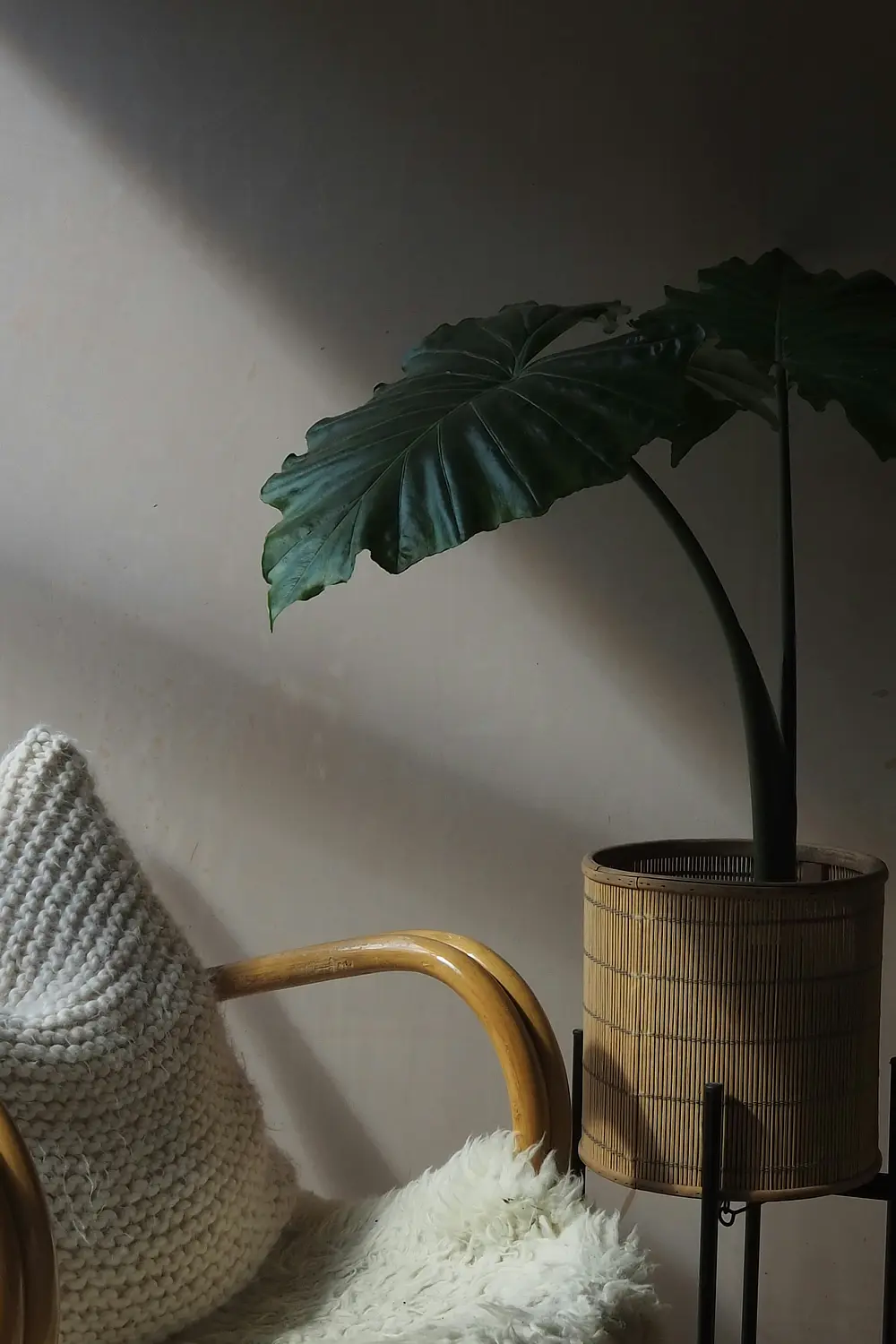House plants face unique challenges – limited light, inconsistent watering, and often being potted in mix designed for outdoor plants. It’s no surprise that even the most seasoned gardeners sometimes struggle to keep indoor plants thriving. If you’re struggling with houseplants, you’re not alone – understanding their needs can make all the difference in helping them flourish indoors.
Some of the easiest plants to grow indoors are Aroids, these are plants from the Araceae family which can be found on every continent of the globe except Antarctica and include commonly known plants such as Pothos (Devils Ivy), Philodendrons, Monsteras and Anthuriums, they can be identified by their unusual flower. The flower has a spathe which looks like a bright colourful petal to attract pollinators and then a spadix which is a pole-like structure that contains the male and female parts of the flower. If you were a young horticulture student like I was you could come up with lots of immature rude references for the look of this flower!
Although easy to grow you still need to give your aroids the right conditions and the first thing to look at is the potting mix. Outdoor potting mixes often have too much water retaining elements – perfect for outdoors but when you take away the wind, direct sunlight and add in the water holding addition of a drip tray you can often get water logging when using it indoors. The easy fix is to add some free draining additions to your potting mix and the good news is these are cheap too. Perlite, vermiculite and even coarse river sand will do the trick, just mix them through up to 40% and you’ll notice your plants start thriving. Aroids are often ground dwelling rainforest plants that then climb larger trees in the search for more light at the top of a canopy so they like the mix to be very free draining, don’t be afraid to go more than less.
Once you have fixed your potting mix watering becomes easier as its harder to waterlog and rot your plants root system. After time you’ll be able to pick up your pot and know when its lighter it needs some water and when it’s got a little weight to it, it can be left alone. To start with water every two to three days and just observe what your plants do and adjust accordingly.
Fertilising aroids and most indoor plants should be done with a liquid fertiliser. Liquid feeds are taken up instantly by your plants so the nutrients can be used immediately. It is important to feed your plants as their new free draining mix will hold onto less nutrients, so you need to be the one to give them all they require. Indoor plant feeds are formulated to focus on leaf growth so are high in nitrogen, if you want to promote the unusual flowers switch to a flower and fruit specific feed in spring and summer.
Getting the light right for your aroids is important, they like lots of light so pop them next to a window. You will notice they want to grow towards the light so instead of looking at their interesting foliage you end up looking at the back side of the leaf. To combat this, you need to rotate the pot of your plants so they even themselves out and grow vertically.
As mentioned most aroids are ground dwellers that then climb a tree so replicating this at home will keep them happy and is actually easier than you might think. First you need to make the tree out of wire mesh, take a small but long amount and loop it around on itself fixing with cable ties to give you a makeshift hollow trunk. Then pack the centre of the trunk with sphagnum moss and plant the pole into a pot with the plant. The aroid will then use this pole as a climbing frame rooting into the sphagnum moss as it grows vertically.
This will give you a space saving and eye-catching addition to the home without taking up too much room. The easiest and best way to water this plant is by punching a few holes into a bottle cap and screwing this onto a full bottle of water then turning it upside down in the top of the moss pole. It will slowly wet all the moss and won’t make a mess.
If you build a moss pole climbing frame propagating your plants couldn’t be easier, simple cut off a section of the pole and replant it into a fresh pot. The roots in the moss will sustain the plant and the original plant will keep growing too for more indoor friendly plants.


